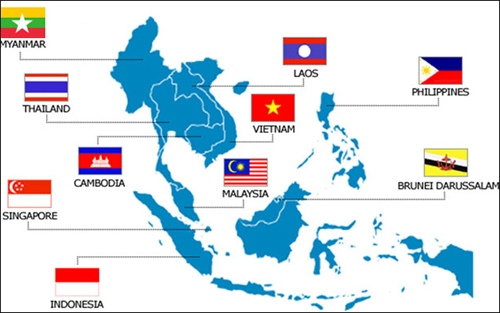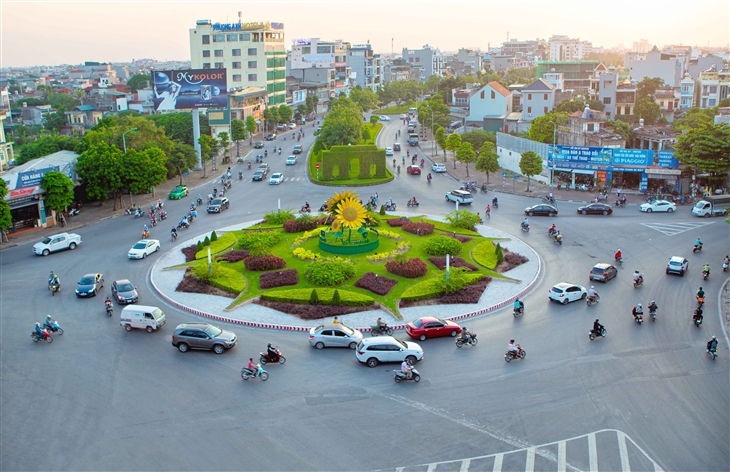AEC 2025: Will the ASEAN Economic Community finally be realised?
Wednesday, November 15,2017
AsemconnectVietnam - As Asean turns 50 how much closer is it towards achieving economic integration? And can it do a better job of hastening reforms and binding Asean member states to their commitments at a time of increasing uncertainty and rising protectionist pressures globally?
The grouping fell short of its target of realising the Asean Economic Community (AEC) by the end of 2015, deferring 105 of its 506 measures. Asean declared that the AEC had been ‘established’ but not actually realised, and accordingly moved the deadline. A successor called the AEC Blueprint 2025 was adopted at the 27th Asean Summit in November 2015.
Asean’s greatest successes so far have been in tariff reduction. On average, member states have 96 per cent of their tariff lines at 0 per cent, and this share is expected to reach 98.7 per cent by 2018. Asean’s commitment to open regionalism has seen the original member states voluntarily multilateralise their tariff preferences, offering them to non-members alike.
Today, more than 70 per cent of intra-Asean trade travels at the most-favoured nation rate of zero. Asean Stewardship See’s Non-tariff Measures Increase 266%
But achievements in tariff liberalisation have been offset by — and partly driven — the rise in non-tariff impediments to trade, which increased from 1,634 to 5,975 between the year 2000 and 2015. Asean member countries also have more restrictive services policies in general than almost any other region in the world.
Pursuing behind-the-border reforms and policy harmonisation has proven the most difficult.
Seeking uniformity in regulatory rules remains challenging given the widely different levels of development, and as a result, its pursuit often clashes with national interests. The result has been delays in the implementation of specific initiatives as well as in the ratification of signed agreements and their alignment with national laws.
To remedy this the AEC Blueprint 2025 consists of five characteristics relating to increased integration, competition, connectivity, inclusion, and globalisation.
While there are similarities with the pillars of the original AEC Blueprint, the new blueprint focuses on more difficult areas of reform, including reducing non-tariff impediments to trade, simplifying rules of origin as well as accelerating and deepening the implementation of trade facilitation measures. There are even plans to begin negotiations on and eventually to implement the Asean Trade in Services Agreement (ATSA).
It features measures aimed at raising productivity through innovation, technology, human resource development, and intensified regional research and development. It also includes measures to enhance participation in global value chains. Inclusion is addressed by supporting micro-, small- and medium-sized enterprises and entrepreneurs to ensure that they also benefit from Asean integration.
But even though Asean is clearly keen to press forward with AEC 2025, the real test lies in how soon and to what extent the aspirational objectives can be implemented on the ground. Asean has a long history of issuing declarations, action plans, and frameworks that are not always translated into action.
The AEC 2025 blueprint explicitly defines mechanisms to ensure that member states comply with their commitments. The Asean Economic Community Council (AECC) is designated as the principal body accountable for enforcing compliance with the blueprint’s strategic measures. Will the AECC help rein in the flexibilities inherent in AEC 2025 and overcome the notorious ‘Asean Way’ of doing business?
This will be key if we are to avoid setting yet another deadline for the AEC come 2025.
Source: bilaterals.org
Standard Chartered, US promote clean energy investments in Vietnam
Vietnam, Russia’s Zabaikal region enhance cooperation
Hai Phong Techfest connects Vietnamese, RoK businesses
Made-in-Vietnam wind turbine towers bound for RoK
Vietnam-Laos-Cambodia-Thailand trade fair opens in Laos
NA Chairman meets with executives of large Chinese groups
Vietnam, Laos sign new trade agreement
French businesses interested in Vietnamese market
Vietnam, Russia discuss stronger agriculture cooperation
Vietnam, Indonesia similarities facilitate trade, agro-fishery cooperation
Vietnam, Japan promote financial mechanisms in green energy transition projects
Vietnam Connect Forum 2024 to take place in Hai Phong next month
Vietnam, Canada look to boost trade cooperation
Binh Duong province seeks cooperation opportunities with Australian partners

Plan of Hai Duong province for a period of 2021 - 2030, ...
Organize space reasonably and harmoniously, focusing on connecting Hai Duong in common development space, actively contributing to the ...Plan of Hau Giang province in a period of 2021 - 2030, ...
Sustainable forestry development program in a period of ...

12th-century ancient road unearthed at My Son Sanctuary
An ancient road dating back to the 12th century has freshly been discovered in an excavation on architectural ruins at the east side of ...Efforts made to seek UNESCO’s recognition for Con Moong ...
Vietnam Art Photo Contest and Exhibition 2024 to be held ...
Bas-relief featuring talks between Uncle Ho and soldiers ...



